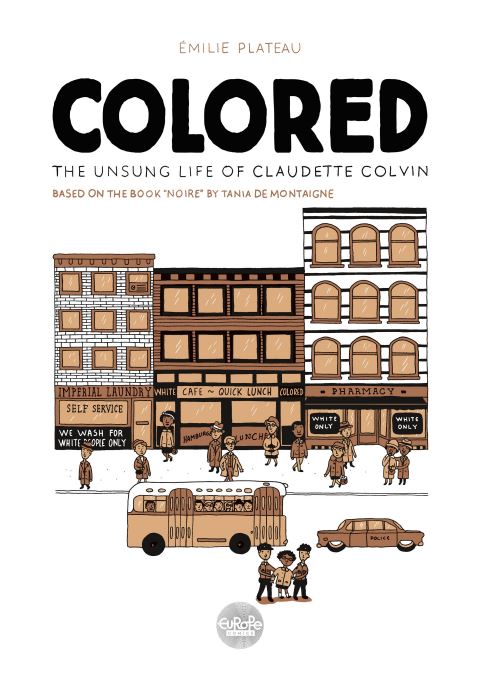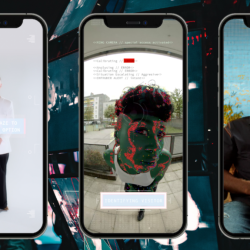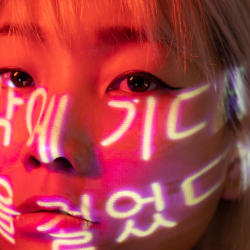This is part two of a two-part series from the 2023 BFI London Film Festival expanded exhibition.
It’s October 2023. In the next hour, I’ll transport to 1950s Montgomery, Alabama, to meet Claudette Colvin — a 15 year old girl who fought segregation laws in America. Forty-five minutes later, I’ll head to the dystopian future to try obtain obtain citizenship in a society ruled by unchecked surveillance.
This year’s BFI London Film Festival expanded exhibition gave audiences a look into the past, present and future with 14 immersive art and extended reality experiences from around the world. Featuring British and international artists, filmmakers and creative teams, this year’s programme offered audiences a vast diversity of approaches to storytelling at the cutting edge of screen technology.
Among them were Tania de Montaigne’s Colored and Karen Palmer’s Consensus Gentium.
MediaCat Magazine recently spoke to both Tania de Montaigne and Karen Palmer about their exhibitions, how technology is reshaping storytelling, and what this means for the future of art.
In part two of this two-part series, we take a step back in time with Colored creator Tania de Montaigne.
For part one with Karen Palmer, head here.
Preserving forgotten stories
Inspired by Tania de Montaigne’s biographical essay, Colored uses holographic imagery and immersive sound to transport audiences back to a pivotal moment in the history of the US Civil Rights Movement. Before Rosa Parks took her historic stand, a young Black girl, Claudette Colvin, stood up for her beliefs by refusing to give up her bus seat to a white passenger.
You originally wrote Colored: The Unsung Life of Claudette Colvin (Noire) in 2015, which was a book then adapted for theatre in 2019. Now adapted for AR, How has immersive technology changed the experience for audiences compared to other mediums?
Each medium is a way to explore storytelling. The strength of literature or theatre is that when you’re reading a book or when you are watching a play, your imagination is an essential part of the creation process. Your imagination put you into action. With AR, you can plunge someone into a world that makes you feel that what you are living is real. This is great, but at the same time, the risk is to lose the powerful dimension of imagination. That is why we have decided very early that this experience should connect all arts (literature, theatre, cinema) together and that the audience should feel more connected instead of isolated.
Colored transports audiences to the 1950s and gives an eye-opening look into the forgotten page in the history of the Civil Rights Movement in the US. What moments, feelings or themes were you aiming to capture by using AR?
As for AR vs VR, our main goal is to make Colored a collective experience. So, as a viewer, we are not only able to follow Claudette at home, at church or in court, but also to embark on this trip with the other viewers! As you move into the space, you also are able to choose your viewpoint. Sharing it live, as we all see each other, makes this story even more meaningful. With the Hololens, our external reality is still present all along. VR would have excluded you from the outside world. AR makes an immediate link between past and present.
The use of augmented reality and technology in your immersive installation is a unique way to convey Claudette Colvin’s story. How do you believe this modern technology enhances the audience’s understanding and connection to her experiences during that pivotal period in history?
The idea today is to bring younger audiences to keep tracks with ancient destinies using today’s technology and realising that for better or worse, as Brecht put it: ‘history is stuttering.’ Focusing on edifying stories, like Claudette’s, is a way to remind the viewer that it might have happened almost 60 years ago but racism, prejudice and social inequities remain topical.

How do you hope this immersive experience and your work will contribute to preserving and celebrating the memory of Claudette Colvin and her role in the civil rights movement?
Our intention was to celebrate Claudette, telling her unknown story, sharing it with as many people as possible in a unique way. The fact that today, after Tania’s book, the play and now the immersive experience, more and more people around the world discover her act of defiance and the injustice she was subjected to is the most important. And more broadly, it focuses on celebrating ordinary heroes. Claudette never premeditated her gesture. She was a shy 15 year old. But that day she realised she couldn’t take it any more. In doing so, we also pay tribute to all the forgotten heroes and heroins who have worked in the shadow of History. Along with Claudette, they are telling us until today that we can say ‘no’ and that bravery has no agenda.
Featured image: Steve Aksnes
































